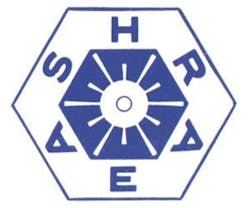BACnet Technologies Well Positioned for Smart Grid Initiatives
The BACnet committee and its working groups met at ASHRAE’s Annual Conference in Louisville, KY, last week to discuss how BACnet technologies can be used to aid development of standards to help Smart Grid efforts led by National Institute of Standards and Technology (NIST), as required by the Energy Independence and Security Act (EISA) of 2007.
The committee’s Utilities Integration Working Group, which has been engaging utility companies and working with national labs on grid-related technologies, including real-time pricing and automated demand response, is being re-chartered as the Smart Grid Working Group (SG-WG).
“We look forward to continuing collaboration among ASHRAE and NIST, Lawrence Berkeley National Laboratory, and other public and private industry organizations as the working group expands its focus to include all aspects of building integration into the Smart Grid, which includes not only communications with utilities and other grid service providers, but also efficient energy system management in buildings and homes,” says David Holmberg, the working group’s leader.
SG-WG is well-positioned to lead BACnet’s efforts in helping the nation create an interoperable Smart Grid, and has moved to update the network security specifications for the BACnet protocol with the publication of an addendum that adds state-of-the-art digital signatures and encryption to enable the creation of FIPS-compliant secure communications. This technology combines with the certificate-based SSL/TLS that can be employed when using BACnet Web Services, and will serve the high security needs of the Smart Grid initiatives.
The BACnet committee has also advanced 10 addenda to final publication stage, created four new addenda for first public review, and revised six addenda for additional public review. Additionally, it formed a new working group to investigate the opportunities for adopting more key capabilities and best practices from the Information Technology industry to ensure that BACnet continues to both integrate well into corporate infrastructures and to expand it into emerging market areas enabled by ubiquitous IP networking. It will work to facilitate the continued integration of the IT and Building Automation infrastructures.
“BACnet is both a mature technology and an ever-changing one,” says Dave Robin, chair of the committee. “Driven by an open consensus-driven industry effort, BACnet always adapts to changing needs without losing the stable core that has ensured interoperability since 1993.”
